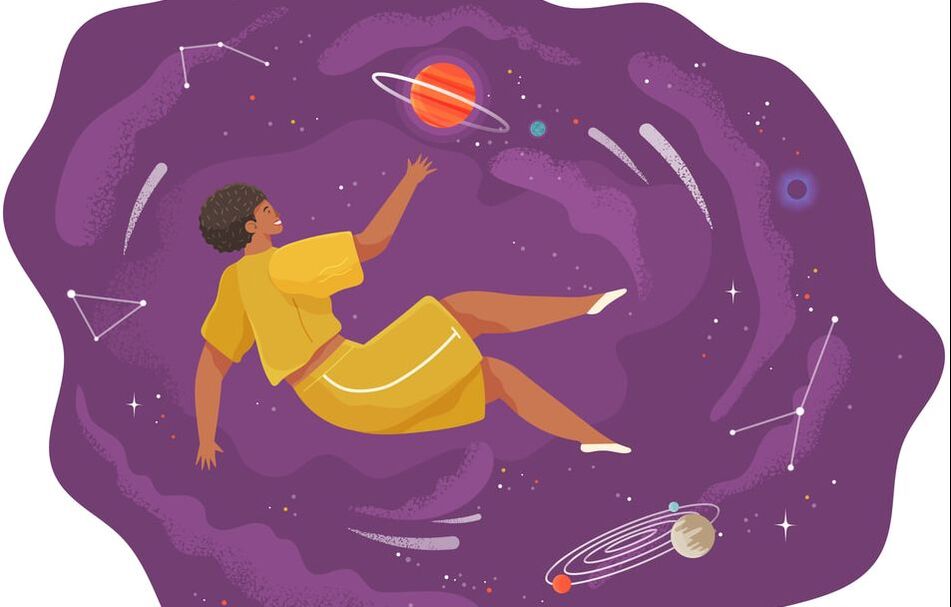Anxiety PlanetWritten By Dr. Kat Harris, PhD, LCP I often tell my clients about Anxiety Planet. Anxiety Planet can be a lonely and scary place. And unfortunately, gravity keeps its inhabitants stuck.
Primary Avoidance There are many reasons why it can be difficult to escape the gravitational pull of Anxiety Planet. The first is avoidance. Avoidance keeps us stuck because it keeps us from facing our fears and seeing that the world isn't as dangerous as it might feel. In other words, the name of the game in getting off of Anxiety Planet is to make safety associations instead of danger associations. However, avoidance makes it essentially impossible or very difficult to make safety associations; therefore, danger associations dominate. For example, if someone has an intense fear of all dogs, we would want them to learn that not all dogs are dangerous. But what if this person refuses to go anywhere near a dog? What if they avoid looking at dogs, hearing dogs, or being anywhere a dog might be? How is it possible for this person to learn that dogs are safe? It would be very difficult. We could try telling the person that dogs are safe. We could share our happy stories involving dogs and try to convince them that their beliefs are erroneous. This might even sway them a smidge. However, it is unlikely, no matter how much we try, that this person will be convinced that dogs are safe merely via trying to talk them out of it. They need experience, which creates new associations. They need to prove to their body and mind that nothing bad happens around dogs. Avoidance keeps the planet spinning; it ensures that the gravitational pull is strong, and that getting off the planet will be difficult. Think of it like feeding a gravity monster. So in treatment, one of my goals is to help my clients stop avoiding to make it easier to escape Anxiety Planet. Secondary Avoidance There are many forms of avoidance. Complete avoidance, as described above, is one example (otherwise known as primary avoidance). However, many people with anxiety engage in all sorts of variations of avoidance (such as safety behaviors [both mental and physical], experiential avoidance, compulsions, worry, etc. - actually most of these things are essentially one in the same and just ended up with various names due the way we conceptualize similar problems...but I digress). Returning to our fear of dogs example: let’s say that the person will only approach dogs with the help of a safety person like a friend (safety behavior). So one day, with the help of a safety person, they have a non-dangerous encounter with a dog. What are they going to attribute this safety experience to? Probably the safety person…they might think something like “thank goodness my friend was here...otherwise something bad might have happened.” In other words, they erroneously conclude that safety is attributable to the safety person, not just to the fact that dogs are generally safe. This can happen with all sorts of safety behaviors such as repeatedly checking that something has been turned off, driving only on back roads, "planning" for the worst, seeking reassurance from others, lucky numbers, etc. Another problem with the use of safety behaviors is that the behavior might distract away from paying attention to safety information (e.g., avoiding eye contact in a social situation might mean the person doesn’t realize that the social situation went well and the other person was smiling) or might even create a self-fulfilling prophecy (e.g., avoiding eye contact may actually make the other person nervous and more likely to provide negative feedback). Lastly, safety behaviors are highly reinforcing and people tend to start believing that the only way they can cope or manage their anxiety is to use their safety behavior. This belief may be true in the short term...but in the long term the safety behaviors wreak havoc. As aforementioned, they feed the gravity monster by maintaining anxiety and inhibiting the kind of learning that is actually needed. And when a person starts realizing their anxiety is just getting worse, they often cling to and try using MORE of their safety behaviors or doing them HARDER. But digging more and harder won’t get someone out of a hole...and feeding the gravity monster will only make it harder to get off of Anxiety Planet. Information Processing Biases Another reason why it can be difficult to escape Anxiety Planet is because of biases in the way we attend to, interpret, and remember information (Information Processing Biases). Much of the way we process information just ends up confirming our prior belief systems. Thus, people who are very afraid of dogs, let's say, may be more likely to attend to, interpret, and remember information consistent with beliefs that dogs are dangerous. For example, if presented with 20 dogs, someone with a dog phobia might be more likely to pay attention to the one dog who appears potentially aggressive. They may even misinterpret neutral behavior (e.g., a dog barking) as evidence of aggression. In addition, that person may be more likely to attend to or remember Facebook articles or news stories about aggressive dogs than articles or stories about friendly happy dogs. Likewise, people with Panic Disorder tend to become hypervigilant to their bodies and physical sensations (they might even body scan), people with OCD tend to become hypervigilant to their thoughts, and people with social anxiety tend to become hypervigilant to possible indicators that others are judging them negatively and therefore feel like the center of [negative] attention, etc. These information processing biases make it difficult to get off of Anxiety Planet because the gravitational pull is to stay put! Or in this case, the “pull” is maintained by a tendency to verify danger associations or beliefs about the dangerousness of dogs or whatever the person fears. Dysfunctional Beliefs Lastly, dysfunctional beliefs contribute to the strength of the gravitational pull. There are many different kinds of maladaptive beliefs which could be the topic of an entire blog itself. Examples include “The Big 3”: overestimations of likelihood of bad things happening, overestimations of the cost of those bad things happening, and underestimations of self-efficacy (the belief that a person can handle what happens to them). Others include (and might even be Big-ger depending on the problem) intolerance of uncertainty (e.g., “I can’t handle not knowing”), intolerance of distress (e.g., “I can’t stand feeling anxious"), beliefs about the importance of responsibility, beliefs about the meaning of thoughts, emotions, etc. These dysfunctional beliefs work in a feedback loop along with various forms of avoidance, information processing biases, and emotions to keep a person stuck in a never ending cycle on Anxiety Planet. So How Do You Get Off of Anxiety Planet? So you’ve come this far and humored several metaphors. How do you get off of Anxiety Planet? The short answer is Exposure and Response Prevention (or other exposure-based approaches). To get off of the planet, you will need to resist engaging in behaviors and beliefs that keep you stuck and will need to start giving yourself opportunities to learn something new instead. And here’s the thing, you will need to work harder in the beginning, because the closer you are to the surface of the planet, the stronger the gravitational pull. BUT, the good news is that the farther you get away from the surface, the less and less strong the gravitational pull, and the easier it gets to escape. So in the beginning, you will have to be purposeful and consistent in the way in which you utilize an approach versus avoidance mindset and stance. But once you gain momentum, it will get easier, and soon you’ll look down and Anxiety Planet will be behind you. One last piece of good news: once you’ve successfully escaped Anxiety Planet, you can be swooped up by the gravitational pull of Healthy Planet! And Healthy Planet has its own gravitational pull to keep you there! You are capable of making this journey! Gravity can be a difficult force to overcome, but we’ve made it to the moon and beyond, and you can too. Comments are closed.
|
OakHeart
|
- Home
- Counseling
-
Specialties
- Depression
- Bipolar Disorder
- Anxiety Disorders >
- Obsessive-Compulsive Disorder (OCD)
- Eating Disorders
- Grief and Bereavement
- ADHD
- Maternal Mental Health
- Infertility, Miscarriage, and Neonatal Loss
- Domestic Violence and Sexual Assault
- Posttraumatic Stress Disorder (PTSD) >
- Trauma
- Non-Suicidal Self-Injury (NSSI)
- Substance Use Disorders (SUD)
- Anger Management
- Insomnia
- Divorce Recovery
- Relationship Concerns and Couples Counseling
- Self-Esteem
- Therapy for Therapists
- LGBTQA+ Support
- Faith-Based Counseling
-
Providers
- Erin Mitchell
- Pamela Heilman
- Katie Sheehan
- Hillary Gorin
- Lee Ann Heathcoat
- Adam Ginsburg
- Megan Noren
- Sarah Williams
- Christina Bieche
- Bridgette Koukos
- Laura Lahay
- Kate Nash
- Anna Perkowski
- Alma Lazaro
- Leah Arthur
- Marissa Vogrin
- Erin Blair
- Amy Jakobsen
- Lizzy Lowe
- Tony Fasano
- Gerry Lawm
- Vanessa Osmer
- Kat Harris
- Locations
- Contact
- Treatments
- Employment
- FAQ and Notices
- OakHeart Blog
- Administrative and Leadership Team
- Mental Health Resources
- Divorce Mediation
- Professional Consultation
|
|




